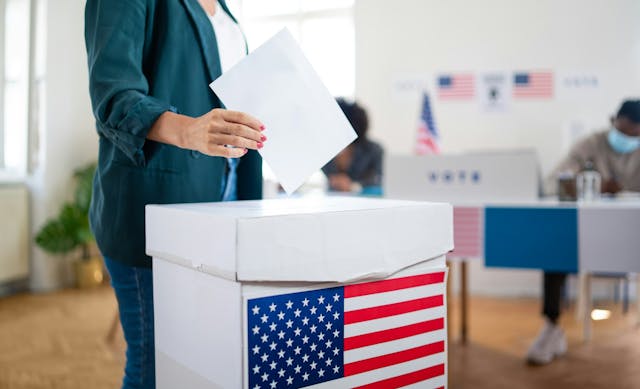Killing Asbestos: How You Can Help Finally Silence This Toxin

Asbestos, widely used for centuries given its strong, heat-resistant properties, is a grouping of minerals usually found in soils and rocks. Predominantly made out of silicon and oxygen fibers, asbestos is used to insulate buildings and homes. It’s also used in ship-building, cement, car brake pads and hundreds of other products.
However, there is no safe level of exposure to asbestos given the effect its fibers have on the human body when ingested or inhaled. Asbestos-related diseases kill over 100,000 people globally every year — about 15,000 of which are American.
Mesothelium is the thin layer of cells lining internal organs. Asbestos can lead to that layer becoming inflamed and hindering organ function.
There are three distinct types of mesothelioma recognized that could affect anyone who has ever been in contact with the substance: pleural, peritoneal and pericardial.
People around the world are petitioning to enforce the ban of asbestos, and nearly 60 countries have already banned the mineral’s use, including all of the European Union.
Lung cancer and other diseases have been linked to asbestos time after time. So why is the US taking so long to protect its citizens from such a toxic substance?
Here’s a look at asbestos throughout political history:
- 1976 – This was when the first act came into law that gave authority to the Environmental Protection Agency (EPA) to assess and control chemical substances, with further regulation powers over 60,000 chemicals. This original act was known as the Toxic Substances Control Act (TSCA).
- 1989 – The EPA issues a final ruling to begin phasing out asbestos use in the U.S.
- 1991 – Following overwhelming contestations from manufacturers and producers of asbestos, the EPA ban was overturned. The EPA was criticized for not entirely taking into account the cost of the ban.
- 1991-2016 – Regulations largely remained unchanged since the rule banning asbestos use was overturned in 1991, with some exceptions.
- 2016 June – The Frank R. Lautenberg Chemical Safety Act for the 21st Century is brought into law as an overhaul of the TSCA.
- 2016 November – Asbestos is included within the initial ten chemicals to be assessed under this law.
- 2017 – The Regulatory Accountability Act is currently being considered in the Senate. It would obligate the EPA to include cost to manufacturers when controlling chemicals.
Last year, the Frank R. Lautenberg Chemical Safety for the 21st Century Act was passed into law for the specific objective of regulating harmful materials such as asbestos. Under this law, the EPA will have undisputed authority to issue another ban on the use and manufacture of asbestos across the country.
Given the lack of progress on controlling the use and manufacture of asbestos as stated above, this is frankly an unmissable opportunity which in itself is well overdue.
There have been some major improvements in the new Chemical Safety Act including:
- The EPA must rely on health and environmental considerations in their entirety when deciding how to regulate harmful materials and substances. In years past, the EPA had to consider the potential effects a banned substance would have on various industries — which is why asbestos has remained unbanned up to today.
- Those among society who are more vulnerable to toxic substance exposure will be prioritized — e.g. children, senior citizens and pregnant women.
- Manufacturers will need to notify the EPA ahead of production of a new chemical, and the EPA will have authority to deem it safe or require testing on it. Moreover, the EPA can also investigate substances that are already on the market.
- The EPA will prioritize the order in which they investigate and regulate each chemical, meaning asbestos could theoretically be fast-tracked. Deadlines will be institutionalized to provide a standardized procedure for assessing and keeping tabs of each chemical with which they are involved.
All these changes are great, but unfortunately, there is still a lot of work to be done. It could take up to seven years for the EPA to carry out its reviews. In that time, over 100,000 Americans could die as a result of asbestos-related illnesses.
For the EPA to be successful, it will need to rely on funding and backing. Unfortunately, Congress has oftentimes been very much against projects undertaken by the EPA.
Furthermore, while President Trump has brought in Scott Pruitt to lead the agency, there are concerns over the direction the reviews of asbestos will take given his previous comments.
As you can see, there is still much needed support from the public to guide the considerations of asbestos to the best outcome. There are so many tragic deaths every year due to asbestos exposure which are frankly unnecessary, and this is why 58 other nations have already issued its ban.
The EPA does have support from several sides. The Mesothelioma Cancer Alliance, for example, works to raise awareness about mesothelioma while educating people about the dangers of asbestos.
Charles MacGregor, a health advocate with the organization, and Heather Von St. James, a nearly 12-year mesothelioma survivor, push for more awareness of the disease and its cause.
“Asbestos is in hundreds of thousands of homes, schools and other public buildings that we visit every day,” MacGregor said. “Most products containing the mineral today are imported into the US. There are some regions of the country where asbestos exposure may be more common, including near Libby, MT, where vermiculite tainted with asbestos was mined and shipped for processing at plants across the country."
McGregor started working with the MCA a couple years ago she says because of her strong desires to help people. She said, "My work isn’t just about teaching people about mesothelioma. I share information about new treatment methods, policy changes that could impact the future of asbestos and even share stories of hope and survival through our advocate, Heather Von St. James.”
Von St. James also provided her thoughts on living as a survivor of the deadly disease:
“Being an almost 12-year survivor, I’m charting new territory as a long-term survivor,” she said.
“Most patients don’t make it this long. I live very much in the moment and do a lot of advocacy work to speak for those who cannot. I’m just thankful I’m here to experience anything! I partnered with the Mesothelioma Cancer Alliance out of the desire to bring awareness to mesothelioma in a broader sense. People who know about mesothelioma are usually patients or loved ones of patients. In order to bring awareness, you need to reach a bigger group.”
Those at the Mesothelioma Cancer Alliance hope that bigger group (you, the reader!) will get involved in the fight against asbestos as well. September 26 is Mesothelioma Awareness Day.
Make your voice heard this year by joining the fight. Participate in events, fundraisers and educational initiatives if you can. Even just signing petitions can urge quicker, more effective change.
Photo Credit: HikoPhotography / shutterstock.com



